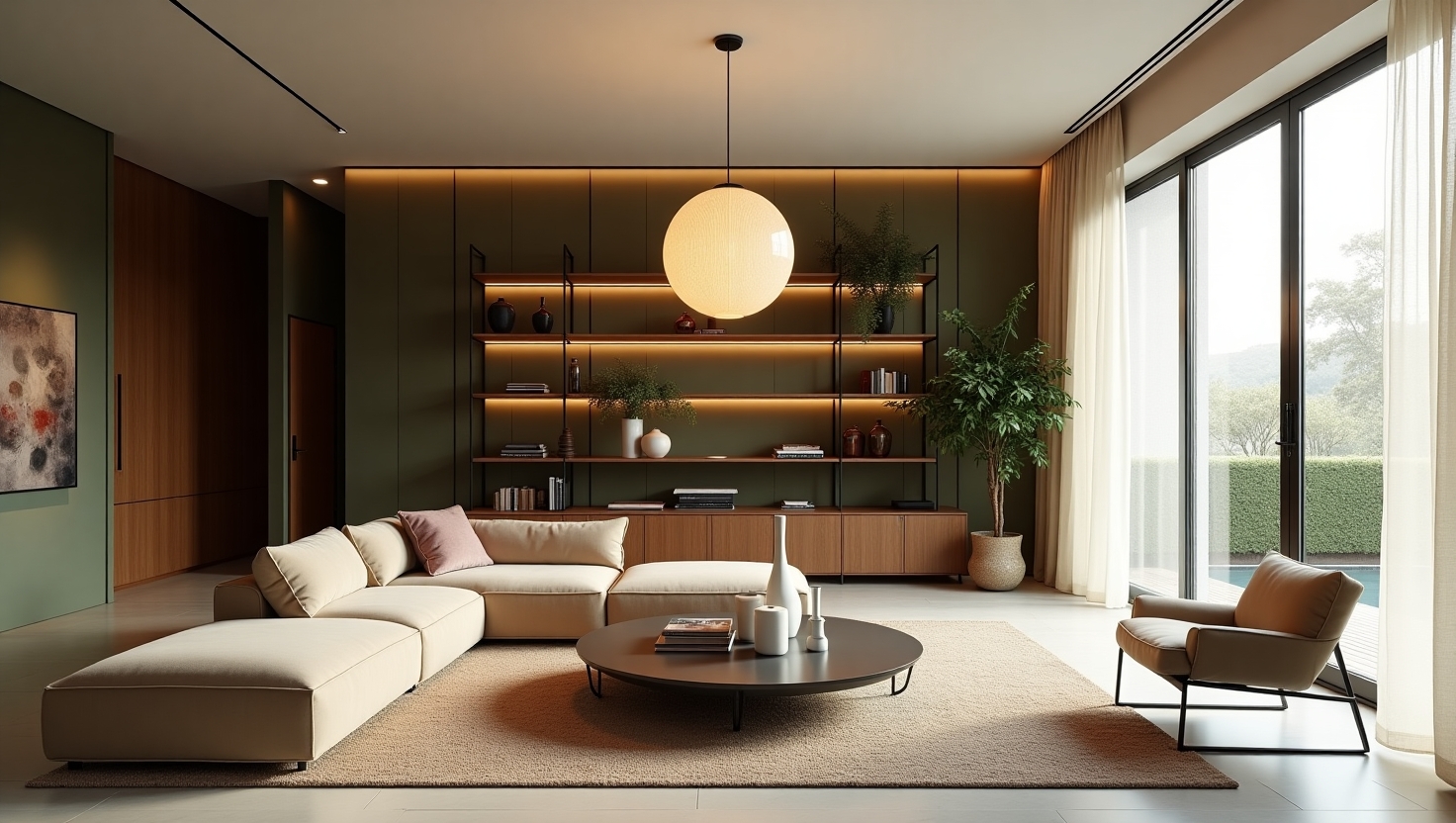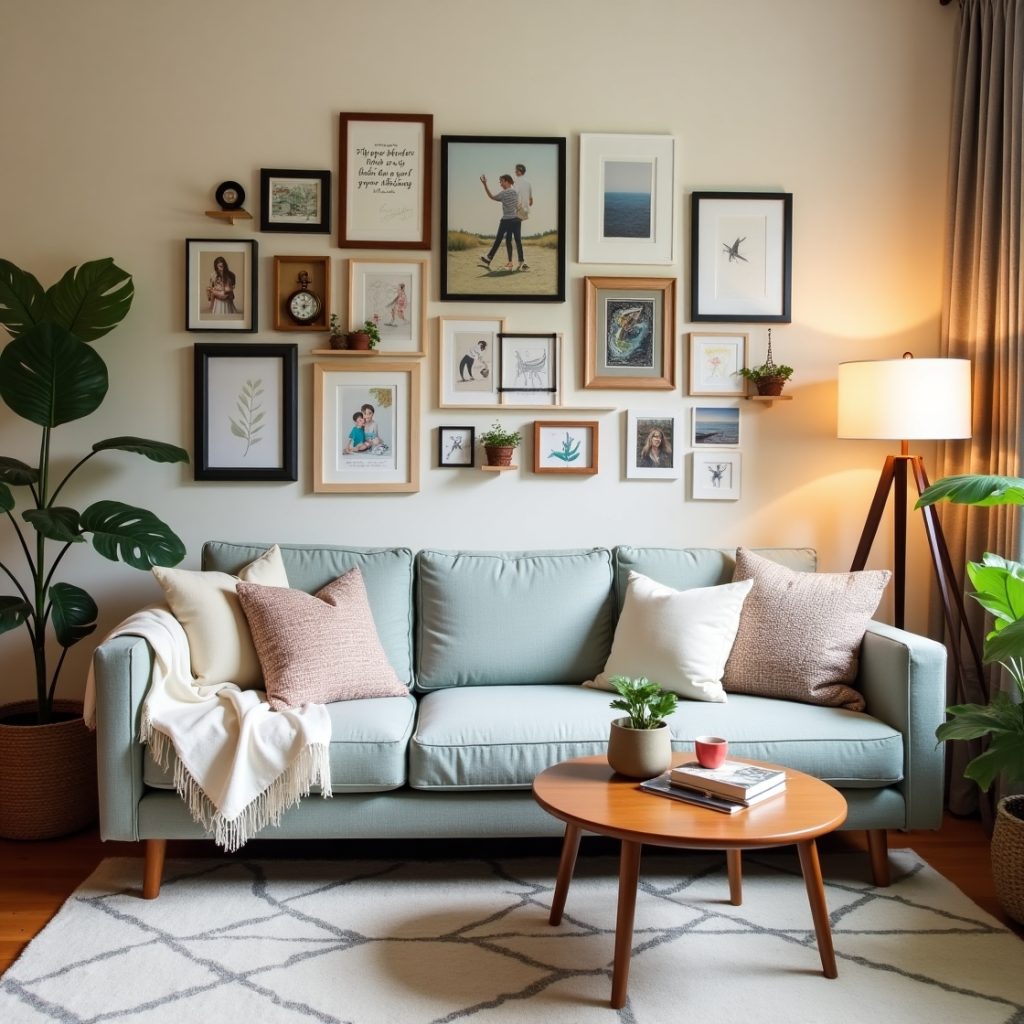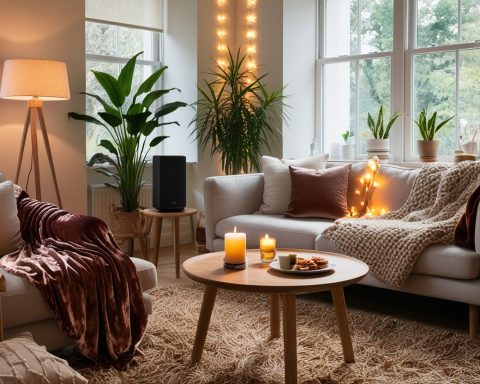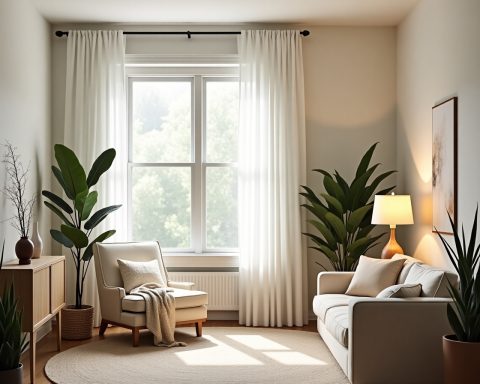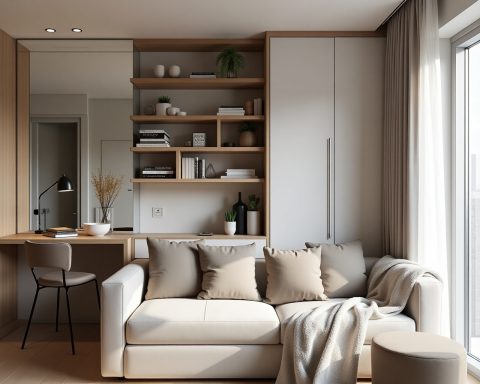As we embrace the transformative year of 2025, the world of interior design continues to evolve, reflecting broader cultural shifts, innovations in materials, and a growing demand for sustainable, functional, and emotionally enriching spaces. Here’s a comprehensive breakdown of what’s trending and what’s fading out in this year’s interior design landscape.
The Rise of Earthy Elegance: Organic Tones and Natural Textures
In 2025, natural materials and earth-inspired palettes are not just preferences—they’re foundational. Beige, terracotta, clay, sand, olive green, and muted rust tones dominate interiors, bringing a grounded, calming feel that resonates with our collective need for peace and connection.
What’s In:
- Limewash walls and plaster finishes for texture-rich backdrops.
- Raw wood, bamboo, linen, and wool textiles.
- Stone accents like travertine and soapstone in kitchens and bathrooms.
What’s Out:
- Cold gray palettes and high-gloss finishes that feel artificial and impersonal.
Multifunctional Spaces for the Modern Lifestyle
With hybrid work becoming the norm and homes doubling as sanctuaries and studios, design must accommodate dynamic lifestyles.
What’s In:
- Convertible furniture, like modular sofas, murphy beds, and foldable desks.
- Zoning strategies using screens, area rugs, or bookcases to separate spaces.
- Integrated home offices that blend with decor rather than disrupt it.
What’s Out:
- Traditional single-purpose rooms like formal dining rooms that see minimal use.
Statement Lighting: Sculptural Fixtures Take the Spotlight
Lighting is no longer just about illumination—it’s a form of art. In 2025, expect bold, organic, and sculptural forms to dominate.
What’s In:
- Oversized pendants in natural materials like rattan and clay.
- LED-integrated art pieces and floating light sculptures.
- Layered lighting: ambient, task, and accent combined for depth.
What’s Out:
- Generic recessed lighting and basic flush mounts that lack character.
Color Psychology Meets Interior Design
Homeowners are increasingly aware of how color impacts mood, leading to a deeper exploration of emotional palettes.
What’s In:
- Deep greens for grounding, muted blues for calm, and sun-baked yellows for energy.
- Color-drenched rooms, where walls, trim, and ceiling share the same hue for an immersive experience.
- Moody monochrome spaces that evoke intimacy and depth.
What’s Out:
- Overuse of white-on-white interiors that lack warmth and dimension.
Curves Over Corners: The Softening of Spaces
2025 sees a major departure from rigid lines and sharp corners in favor of softer silhouettes and rounded forms.
What’s In:
- Curved sofas, archways, round dining tables, and circular rugs.
- Blob-shaped coffee tables and organic, amorphous furniture.
- Architectural interest with arched niches, built-in benches, and rounded cabinetry.
What’s Out:
- Boxy furniture and straight-lined modernism that feels sterile and outdated.
Sustainable and Ethical Interiors
With a growing emphasis on climate responsibility, 2025 places sustainability at the heart of every design decision.
What’s In:
- Reclaimed materials and vintage furniture for eco-conscious style.
- Natural insulation, low-VOC paints, and biodegradable materials.
- Support for local artisans and brands with transparent supply chains.
What’s Out:
- Fast-furniture and disposable decor with short lifespans and high environmental impact.
Quiet Luxury: Understated Sophistication
Quiet luxury is all about investing in fewer, higher-quality pieces that speak volumes in craftsmanship and detail.
What’s In:
- Handmade ceramics, tailored drapery, custom upholstery, and natural marble surfaces.
- Subtle elegance with soft neutrals, layered textures, and thoughtful symmetry.
- Minimalist design with emotional richness rather than cold austerity.
What’s Out:
- Loud, maximalist displays of wealth with gaudy golds and faux finishes.
Heritage Touches and Global Influence
Blending the old with the new is a key theme in 2025. Interiors now celebrate global cultures and ancestral design elements.
What’s In:
- Textiles and artifacts from Moroccan, Japanese, and Nordic design traditions.
- Antique finds mixed with modern furniture for layered storytelling.
- Wabi-sabi aesthetics, valuing imperfection and organic beauty.
What’s Out:
- Mass-produced decor lacking personality or cultural value.
Maximalist Kitchens & Natural Bathrooms
The kitchen and bathroom are being reimagined with personality and wellness in mind.
Kitchen Trends:
What’s In:
- Bold backsplash tiles, open shelving, statement islands with unique stone patterns.
- Integrated appliances and smart storage solutions that optimize space without sacrificing aesthetics.
What’s Out:
- All-white sterile kitchens and high-maintenance gloss cabinetry.
Bathroom Trends:
What’s In:
- Spa-inspired retreats with freestanding tubs, rainfall showers, and stone vanities.
- Plants, textured tiles, and warm metallics like brushed brass.
What’s Out:
- Overly clinical, all-tile bathrooms with no warmth or character.
Digital Detox Zones and Sensory Spaces
Mental wellness plays a central role in design, prompting the rise of digital-free sanctuaries and spaces that soothe the senses.
What’s In:
- Reading nooks, meditation corners, and no-tech bedrooms.
- Scented elements like essential oil diffusers and soundscapes for ambiance.
- Soft, cocooning furniture and lighting designed to reduce overstimulation.
What’s Out:
- Screen-dominated spaces and overstimulating LED-heavy setups.
Art as a Design Anchor
2025 interiors treat artwork not as an afterthought but a central design element from the start.
What’s In:
- Large-scale canvases, tapestries, and sculptural wall pieces.
- Custom commissions and local artists being prioritized.
- Integration of digital art through rotating frames and NFT galleries.
What’s Out:
- Generic prints and overused wall decals that lack originality.
A Year of Authentic, Purposeful Design
In 2025, interior design is a deeply personal reflection of values, lifestyle, and aesthetic identity. The trends moving in emphasize warmth, sustainability, and intentionality, while those moving out reflect a shift away from impersonal, disposable, or trend-chasing decor. It’s a year where every detail tells a story, and every space serves a purpose—beautifully and mindfully.
